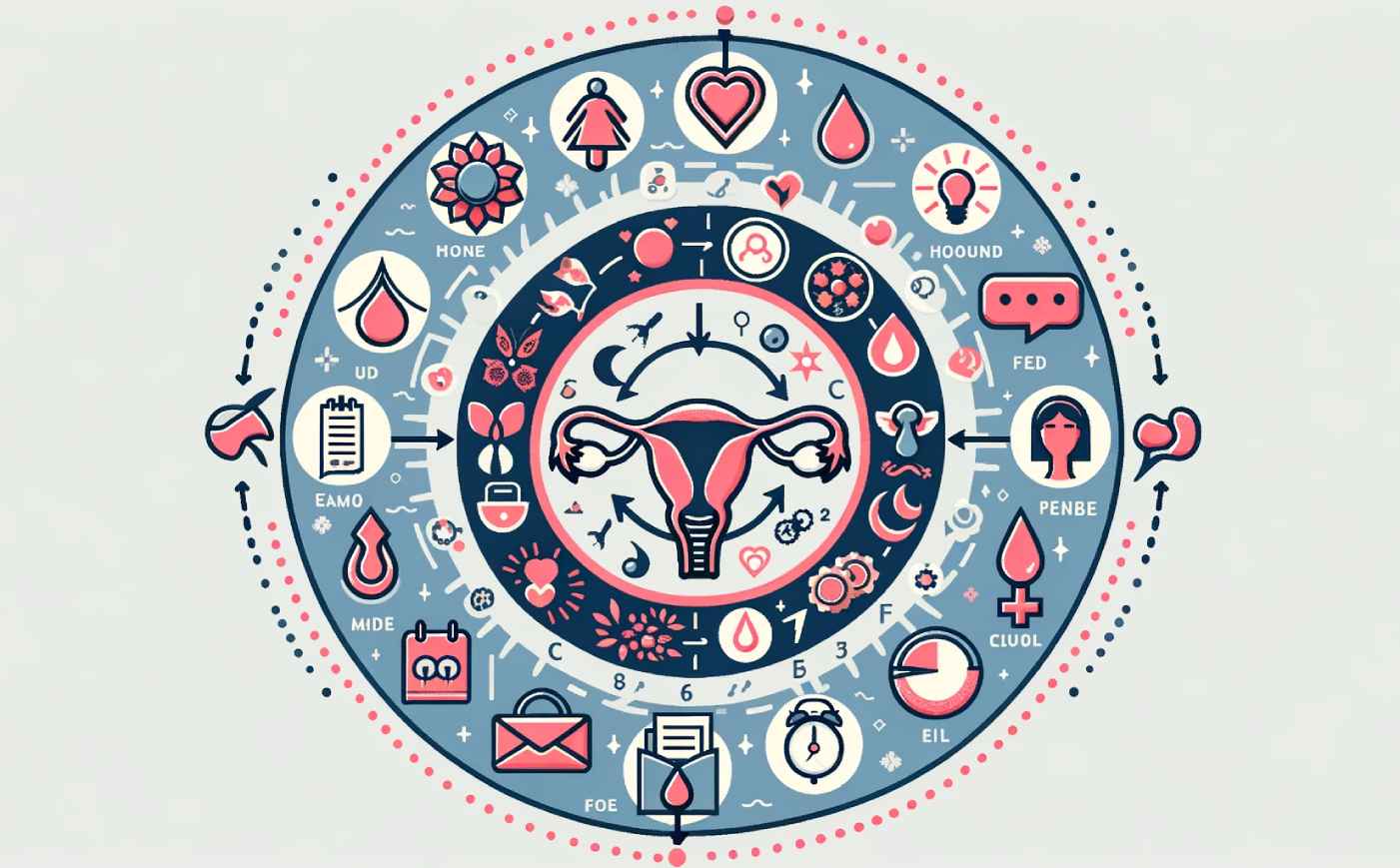Menstruation, a natural process most women experience, significantly influences overall health and mood due to hormonal fluctuations during the cycle. Let’s look into the complexities of menstrual cycle hormones, their influence on mood, and how to manage the emotional upheavals associated with them.
Contents
Menstrual Cycle
The menstrual cycle is a complex interplay of hormones that prepare the female body for possible pregnancy. Each cycle includes four phases: the menstrual phase, the follicular phase, ovulation, and the luteal phase.
Each phase is associated with specific hormonal changes that can affect a woman’s mood, energy levels, and overall wellbeing.
Menstrual Phase: A Time of Rest and Renewal
The menstrual phase marks the beginning of the cycle, characterized by the shedding of the uterine lining. During this time, the levels of both progesterone and estrogen are low, which can sometimes result in feelings of fatigue, sadness, or irritability.
Follicular Phase: A Surge of Energy and Positivity
Next comes the follicular phase, where estrogen levels start to rise, preparing the body for ovulation. This surge in estrogen can boost mood, increase energy, and enhance motivation, making it an ideal time to tackle challenging tasks and engage in social activities.
Ovulation: Peak Fertility and Confidence
Ovulation is the midpoint of the menstrual cycle, characterized by a surge in luteinizing hormone, which triggers the release of an egg from the ovaries. During this phase, many women report feeling more confident, outgoing, and even more attractive, due to a slight increase in testosterone.
Luteal Phase and Premenstrual Phase: Emotional Ups and Downs
The luteal phase follows ovulation, marked by rising progesterone levels and falling estrogen levels. This hormonal shift can lead to feelings of calm and relaxation. However, as the body prepares for the possible onset of menstruation, these hormone levels drop, which can trigger premenstrual syndrome (PMS).
PMS symptoms can include mood swings, anxiety, irritability, and physical discomfort.
Deeper Dive into PMS
Premenstrual syndrome (PMS) is a collection of physical, emotional, and psychological symptoms that occur in the week or two leading up to menstruation. These symptoms can range from mild to severe and can significantly impact a woman’s daily life.
Understanding the Role of Serotonin
Serotonin, often referred to as the “feel-good” hormone, plays a significant role in mood regulation. Low estrogen levels during the premenstrual phase can lead to a decrease in serotonin, which can result in feelings of sadness, irritability, and anxiety.
The Impact of Progesterone and Dopamine
Progesterone, known for its calming effect, can also influence mood during the menstrual cycle. However, low progesterone levels during the premenstrual phase can lead to feelings of depression and anxiety.
Similarly, dopamine, the “reward neurotransmitter,” is affected by hormonal fluctuations. Low dopamine levels can result in feelings of low motivation and decreased pleasure.
When PMS Becomes PMDD
For some women, premenstrual symptoms can be so severe that they interfere with daily activities. This condition, known as premenstrual dysphoric disorder (PMDD), is a more severe form of PMS that affects up to 8% of women during their reproductive years.
Recognizing PMDD Symptoms
PMDD symptoms can include severe depression, anger, irritability, difficulty concentrating, and physical symptoms such as bloating and breast tenderness. These symptoms generally occur during the luteal phase of the menstrual cycle and subside within a few days of menstruation.
Diagnosis and Treatment of PMDD
Diagnosing PMDD can be challenging due to the similarity of its symptoms with other mood disorders. However, tracking symptoms across two menstrual cycles can help to establish a diagnosis. Treatments for PMDD can include lifestyle changes, cognitive-behavioral therapy (CBT), antidepressants, and hormonal contraceptives.
Influence of Menstrual Cycle Hormones on Mood
The hormonal fluctuations that occur throughout the menstrual cycle can significantly influence mood and overall wellbeing. Understanding these hormonal shifts and what vitamins help balance them is important for females. Their impacts can help women better manage their menstrual cycle and its associated mood changes.
While PMS and PMDD can pose significant challenges, there are treatments available to help manage these conditions. It’s important to speak with a healthcare provider if you’re experiencing severe premenstrual symptoms or if your mood changes significantly throughout your menstrual cycle.
By educating ourselves about the intricate relationship between menstrual cycle hormones and mood, we can better understand our bodies and advocate for our health. Every menstrual cycle is different. What may be a minor inconvenience for one woman can be a significant life disruptor for another.



